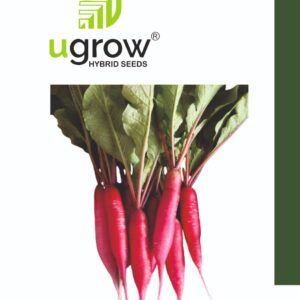Salvia Flower Seeds
₹ 25.00
Salvia Flower Seeds
About this item
- Number of Salvia Seeds: (30-40 Seeds)
- Sowing method: Direct
- Germination Time: 6-7 Days from sowing
- Height: 30cm
- Nursery: Nursery
- Distance: 15cm
Images are for reference purposes only. Actual product may vary in shape or appearance based on climate, age, height, etc. The product is replaceable but not returnable.
Salvia, commonly known as sage, encompasses a diverse genus of plants, including annuals, perennials, and shrubs. These plants are loved for their ornamental flowers that come in various colors like blue, purple, red, pink, and white. Here’s a guide on how to grow salvia:
Characteristics:
- Flowers: Salvia produces spikes or clusters of tubular-shaped flowers that attract pollinators like bees and butterflies. Colors vary based on the species and variety.
- Height: Heights vary widely depending on the species, ranging from 6 inches to several feet tall.
- Foliage: Salvia leaves are often aromatic, gray-green, or green, depending on the species. Some have textured or variegated foliage.
Growing Salvia:
- Soil and Location:
- Salvia prefers well-draining soil with good fertility. It thrives in full sun but can tolerate partial shade, especially in hotter climates.
- Planting:
- Plant salvia in early spring after the last frost date. Space the plants according to the specific variety’s recommended spacing, usually around 12 to 18 inches (30 to 45 cm) apart.
- Ensure the soil is well-prepared with compost and free of weeds before planting.
- Watering:
- Keep the soil consistently moist, especially during the plant’s establishment period. Once established, salvia is relatively drought-tolerant but benefits from regular watering.
- Temperature and Maintenance:
- Salvia generally prefers moderate temperatures. Adequate watering and mulching can help it withstand heat.
- Deadhead spent flowers regularly to encourage prolonged blooming and maintain plant appearance.
- Fertilization:
- Salvia typically doesn’t require heavy fertilization. A light application of a balanced fertilizer or compost in early spring can promote healthy growth.
- Pest and Disease Control:
- Salvia is relatively resistant to pests and diseases. Ensure good air circulation around the plants and monitor for issues like aphids or powdery mildew.
- Overwintering:
- Some salvia varieties are perennial and will return in subsequent years. Mulch around the plants in late fall to protect the roots during colder temperatures.
Salvia’s ornamental flowers make them perfect for garden borders, containers, or as pollinator-friendly plants. With proper care—ensuring well-draining soil, adequate water, sunlight, and attention to potential pests or diseases—you can enjoy the vibrant beauty of salvia in your garden.
Additional information
| Quantity | 25 |
|---|
















Reviews
There are no reviews yet.